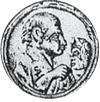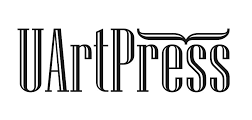“Ceci est une pipe!”- Reality and Illusion in Tadeusz Kantor’s “The Dead Class”
Keywords:
authenticity, realityAbstract
Tadeusz Kantor’s theatre was the work of a reformer and one of the landmarks of 20th century art. Throughout his career, Kantor resisted illusion and firmly believed in the reality of his productions. His very presence on stage during his performances was an anti-illusionist act. Kantor didn’t want to create through his art something similar to reality, but a reality in itself. For Kantor, ‘illusion’ was tantamount to ‘fake’, while ‘reality’ was the equivalent of ‘authenticity’. This article investigates the Polish director’s view on the concepts of illusion and reality, referring constantly both to his performances and to his manifestos, its main documented conclusion being that the resistance to the illusion was Ariadne’s thread in Kantor’s art.
References
CRIȘAN, Sorin, 2008. Tadeusz Kantor: teatrul prezenței – teatrul absenței. In CRIȘAN, Sorin. Teatru și cunoaștere, Cluj-Napoca: Dacia Publishing House, pp.169-180.
GIERACZYŃSKI, Bogdan, 1981. Kantor’s Art is a Blind Alley or Is It That We’re Afraid of Ourselves…. Le Theatre en Pologne/Theatre in Poland, no. 1 (269)/1981, Warsaw, pp. 12-14.
GRODZICKI, August, 1977. Tadeusz Kantor and His ‘Cricot-2’ Theatre. Le Théâtre en Pologne/Theatre in Poland, no. 8 (228)/1977, Warsaw, pp. 9-13.
KANTOR, Tadeusz, s.a. Lesson 12 of The Milano Lessons. [excerpt], [accessed January the 10th 2012] Retrieved from: http://www.cortical.org/pink/2.13.html.
KANTOR, Tadeusz, 1994. Texts, Essays, and Intimate Commentaries. Performing Arts Journal, Vol. 16, No. 2 (May, 1994), pp. 19-45, DOI: 10.2307/3245761.
KLUTH, Michael, 1997. Tadeusz Kantor - The Inspired Tyrant, a documentary by Andrzej Bialko. Produced by Stowarzyszenje na Rzecz Inicjatyw Kulturalnych Krakow-Nurnberg-Frankfurt.
KŁOSSOWICZ, Jan, 1995. Kantor’s Legacy, s.l. [accessed January the 10th, 2012]. Retrieved from: https://journals.ku.edu/index.php/jdtc/article/viewFile/3165/3104, p. 190
KOBIALKA, Michal, 2010. O călătorie în alte spații. Teatrul lui Tadeusz Kantor, [translated from English into Romanian by Cipriana Petre], Cluj-Napoca: Casa Cărții de Știință Publishing House.
KRZEMIEŃ, Tereza, 1975. The Object Becomes an Actor, Conversation with Tadeusz Kantor. Le Théâtre en Pologne/Theatre in Poland, no. 3-4/1975, Warsaw, pp. 38-40.
LEHMANN, Hans-Thies, 2006. Kantor or the ceremony. In LEHMANN, Hans-Thies. Postdramatic Theatre, [translated and with an Introduction by Karen Jürs-Munby], London: Routlege Taylor&Francis Group, and New York: Taylor&Francis e-library.
LEWIS, Pericles, s. a. Antonin Artaud – Biography, [accessed January the 10th, 2012]. Retrieved from: http://modernism.research.yale.edu/wiki/index.php/Antonin_Artaud.
MAHLOW, Dietrich, 1969. Kantor ist da, produced by Saarländischer Rundfunks.
SCARPETTA, Guy, 2000. Kantor au présent – une longue conversation – essai. [Le temps du théâtre, série dirigée par Georges Banu], Actes Sud/ Academie expérimentale des théâtres.
SOCIU, Ionuț, 2007. Despre Tadeusz Kantor, Observator cultural, nr. 384/2007, also available at http://www.observatorcultural.ro/Despre-Tadeusz-Kantor*articleID_18116-articles_details.html, [accessed January the 10th, 2012].
UBERSFELD, Anne, 1999. Termenii cheie ai analizei teatrului, [translated from French into Romanian by Georgeta Loghin], Iași: Institutul European.
WITTS, Noel, 2009. Tadeusz Kantor, London: Routlege Taylor & Francis Group, and New York: Taylor & Francis e-Library.
Performing Arts Journal, 1994. Vol. 16, No. 2. (May, 1994).
Downloads
Published
How to Cite
Issue
Section
License

This work is licensed under a Creative Commons Attribution 4.0 International License.
CC-BY permits any use, reproduction, distribution, self-archiving and citation of the work as long as the authors are credited. The complete bibliographical data of Symbolon Journal must also be indicated, which you can find in the How to cite section on this page. If possible, please also place a link leading to the original publication.
Copyright of the paper belongs to the author(s).




